Cool and Circulate the Air All Over Your Home with Fans
There are many types of fans, one perfect for every corner of your home. You can turn off your air conditioning and save money often if you buy enough fans and use them everywhere. This guide describes all types of fans, how to buy
them and use them to cool and circulate the air with fans.
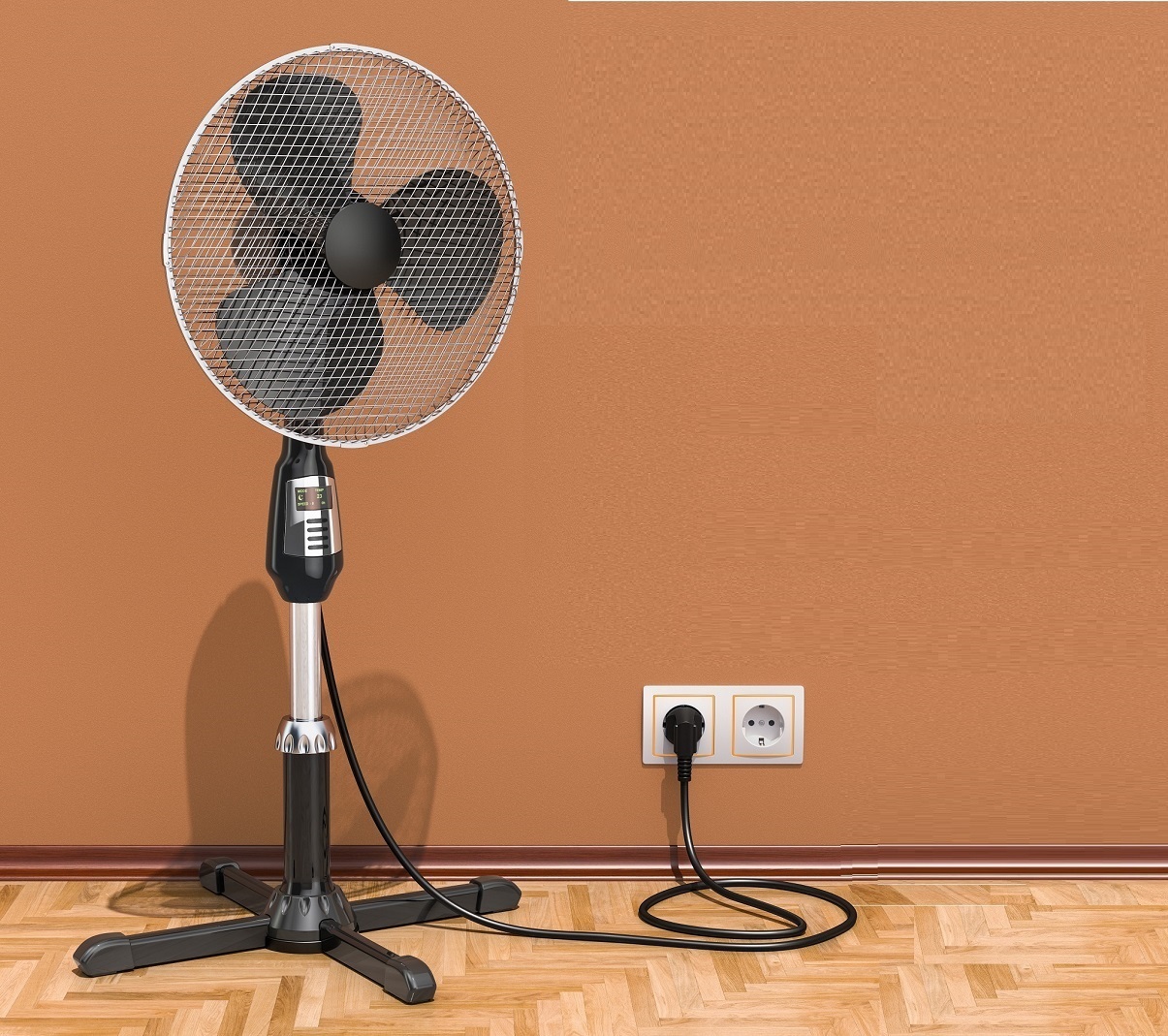
BTable of Contents
BOther Posts on Home Energy
There are many ways to use less air conditioning by making better use of fans. For example, if your second floor doesn’t get as cool as your first floor when your air conditioning is running, so you make your first floor cooler
than necessary, you can circulate the second floor air with fans to make the second floor more comfortable and leave the first floor at it’s ideal temperature.
When the outdoor air is cooler than the indoor air, you can use window fans to draw in outdoor air to cool your home. This will also remove air that is more humid and not as clean as outdoor air.
You can set the thermostat a little higher in summer and have the same comfort level if you use large fans to circulate the air in the rooms you occupy. Breezes cool you because good air circulation causes heat to leave your body.
Window Fans
Window fans are normally used to cool the home by blowing out air, which is replaced by cooler air entering from open windows or air that leaks in from around windows and doors, through laundry and bathroom exhausts, and other places.
Some window fans have reversible direction control, to move air in or out of the house. All window fans have rain-resistant motors and “expander panels”, which slide outward to block air from flowing around the fan.
Expander panels are important because without them the air pressure would be low behind the fans, causing outside air to be drawn in next to the fans and be blown out. Thus, box fans should not be used in windows, because they have
no expander panels and also because they are not rain-resistant.
Single blade window fans normally have 16″ or 20” blades and are used in double hung windows. Dual blade window fans have two 7″, 8” or 9” blades and are also used in double hung windows. There are also window fans designed for sliding
windows and casement windows, called “vertical window fans”. Most of these have three small blades.
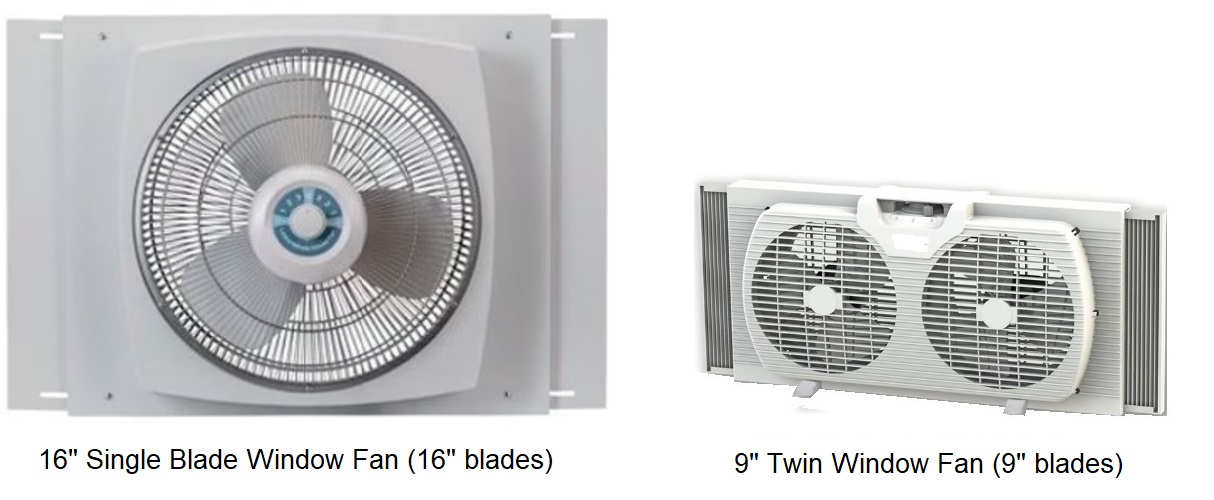
Single blade window fans create much greater airflow than dual blade window fans, but they block the view through the window. Most single blade fans create airflows of between 2500 CFM and 3500 CFM. Dual blade fans have airflow rates
in the range of 750 CFM to 1500 CFM. These ranges are only approximate because most manufactures don’t give them, but they may be printed on the box or on the company’s website or the store’s website.
The maximum airflows are similar for fans of a particular blade size with three speeds. They are similar because the fans would be too noisy at a higher speed. The wattages are not given for most window fans, but you can estimate
it using the models which do give the wattage. One 1400 CFM dual blade window fan uses 70 watts at high speed and one 3560 CFM single blade fan shown above uses 170 watts at high speed. These wattages may not indicate your electricity
usage because you may run the fan at lower speeds to be quieter.
Almost all window fans have three speeds, some models allow the window screen to remain in, and some are “electrically reversible”, to blow air in or out. Window fans with thermostat control measure the inside and outside temperatures
and go on when the outside temperature is cooler than the inside temperature. To use these you must of course leave the window open during the day.
Electrically reversible window fans allow you to cool a room rapidly when it is much cooler outside than inside.
Use and care manuals warn that it is unsafe, but not forbidden to use extension cords, so try to put your window fans in windows close to electrical outlets. Never use an old cord or a thin, low-wattage cord designed for lamps. Both
of these present serious fire hazards. See
Fan Electrical Safety
Portable Fans
You can create a breeze anywhere in your home if you use the right portable fans. Buy several types and test them to find which work best in every part of your home: box fans, floor fans, stand fans (pedestal fans), tabletop fans and
clip on fans.
Box Fans
Box fans are large, inexpensive, relatively powerful fans that rest on the floor. Most models have three speeds. They run quietly at low speed and create a high airflow at high speed. The 20″ models create airflows of over 2000 CFM
(cubic ft. per min). Most models should not be used in windows because they are not rain-resistant.
Box fans are more popular than stand fans because they are less expensive, easy to carry from room to room, and easy to store. Most have 20” blades, which gives them greater airflow than stand fans, but they need greater airflow to
cool as well as stand fans because they blow the air close to the floor, where you don’t feel it as strongly, and because the air doesn’t move across the room well at floor level. There are 10″ rain resistant box fans which can be
used either as window fans or set on the floor. These are lighter in weight than window fans.
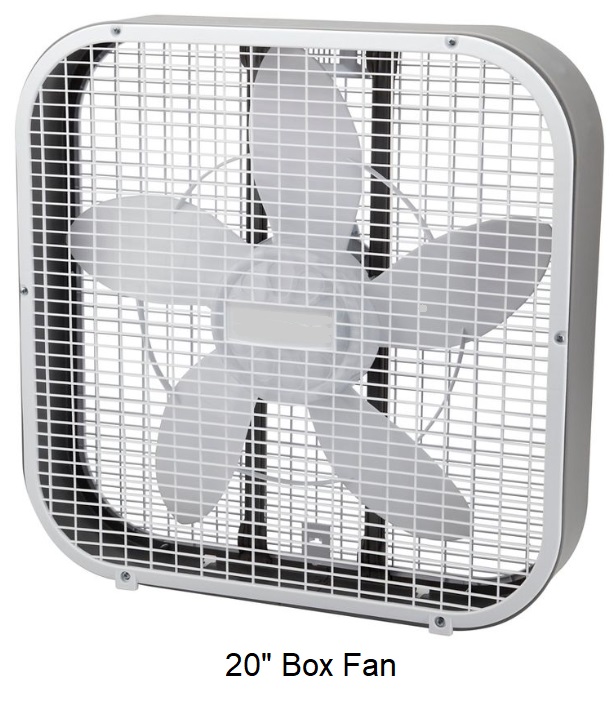
Floor Fans
Floor fans are normally large fans that rest on the floor and tilt slightly upward. They basically have greater airflows than other types of portable fans They cool more effectively than box fans because they can be tilted upward to
aim the breeze toward your upper body and because the air flows farther than if it were moving across the floor.
They are available in a very wide range of sizes, from models with 9″ blades which produce only about 300 CFM to models with 20″ blades that produce 5000 CFM. The largest stand fans produce about 3000 CFM. The maximum airflow is not given for most models, but those that produce very high airflow may be labeled as “20 inch high velocity floor fans”.

The size and weight of a floor fan will help you estimate its airflow relative to other floor fans. Weights are given on the websites of the store where the fans are sold. The largest
floor fans available at most stores produce airflows of about 3000 CFM. The largest stand fans available at most stores may be about 2000 CFM, but stand fans, unlike floor fans, have models available which oscillate over a wide angle.
Stand Fans (Pedestal Fans)
Stand fans, also called “pedestal fans”, are mounted on adjustable-height stands. They can be more effective than floor fans or box fans because they create a breeze at chest level where you feel it more strongly, and because air flows
farther at that level. Many are designed to oscillate about 80º to cover a large area. Their maximum airflow is limited by the size and weight of the base.
Stand fans with high airflow rates and heavy bases are not popular and are not sold in most stores. This is presumably because they are hard to move around the house. The most popular models have a light-weight disk base and 16” blades that produce about 1100 CFM. This is about half the airflow of the typical box fan.
Most models with heavy disk bases have large 18″ blades and produce about 2000 CFM. The largest stand fans have large, four-legged bases and produce over 3000 CFM. These can create breeze for an entire floor.
Oscillating stand fans can be used next to a window air conditioner or a mini split heat pump
to circulate its cold air throughout the room.
Tower Fans

Tower fans are tall, narrow fans that are shaped like a tower and have no blades. In place of blades they have a long, thin drum with many small wind vanes attached. The drum rotates within an outer casing and the wind vanes throw
out air all along the fan. The outer casing has an opening directs the air. Many models oscillate, to cool a large area. The most popular models range from 3 ft. to 4 ft. tall. They are quieter than any other type of large, portable
fan because the rotating drum is in a casing and because their are no blades.
Tower fans are very popular, in spite of being the most expensive type of portable fan. They are good for bedrooms because they are quiet and take up less floor space. Their airflows range from less than 1000 CFM to over 3000 CFM. This is about the same as the range of airflows of stand fans. Some models have a feature called an “ionizer”. This allows the fan to electrically remove dust and smoke from the air as it passes through.


Tabletop (desktop) tower fans are typically about 12″ high. They are quieter and produce higher airflows than other table top fans, so they are good to set on a table or desk to cool you while you work. Many models produce about 400
CFM. Their airflows are usually not given on the packages or the websites.
The energy efficiency of tower fans is hard to compare to that of stand fans because the manufacturers of each type seldom give the wattage used by their products. However, tower fans that have ionizer features are much less efficient than those that do not, because ionizers use much electricity.
Table Fans
Table fans, also called tabletop fans, range in size from models with 4″ blades that you set close to you on a desk or table, to models with 12″ blades which can move air across the room. The smallest have airflows of about 160 CFM
and the 12″ models have airflows ranging from 400 to 900 CFM.
They are the most energy efficient type of fan for one person because they can cool you as well as a large fan if you are sitting at a desk or table, while using much less electricity. There are usb models, which you can plug into your computer, low voltage models which use a transformer, and 120-volt models, which are the most powerful. There are oscillating models and other features available, such as three speeds.
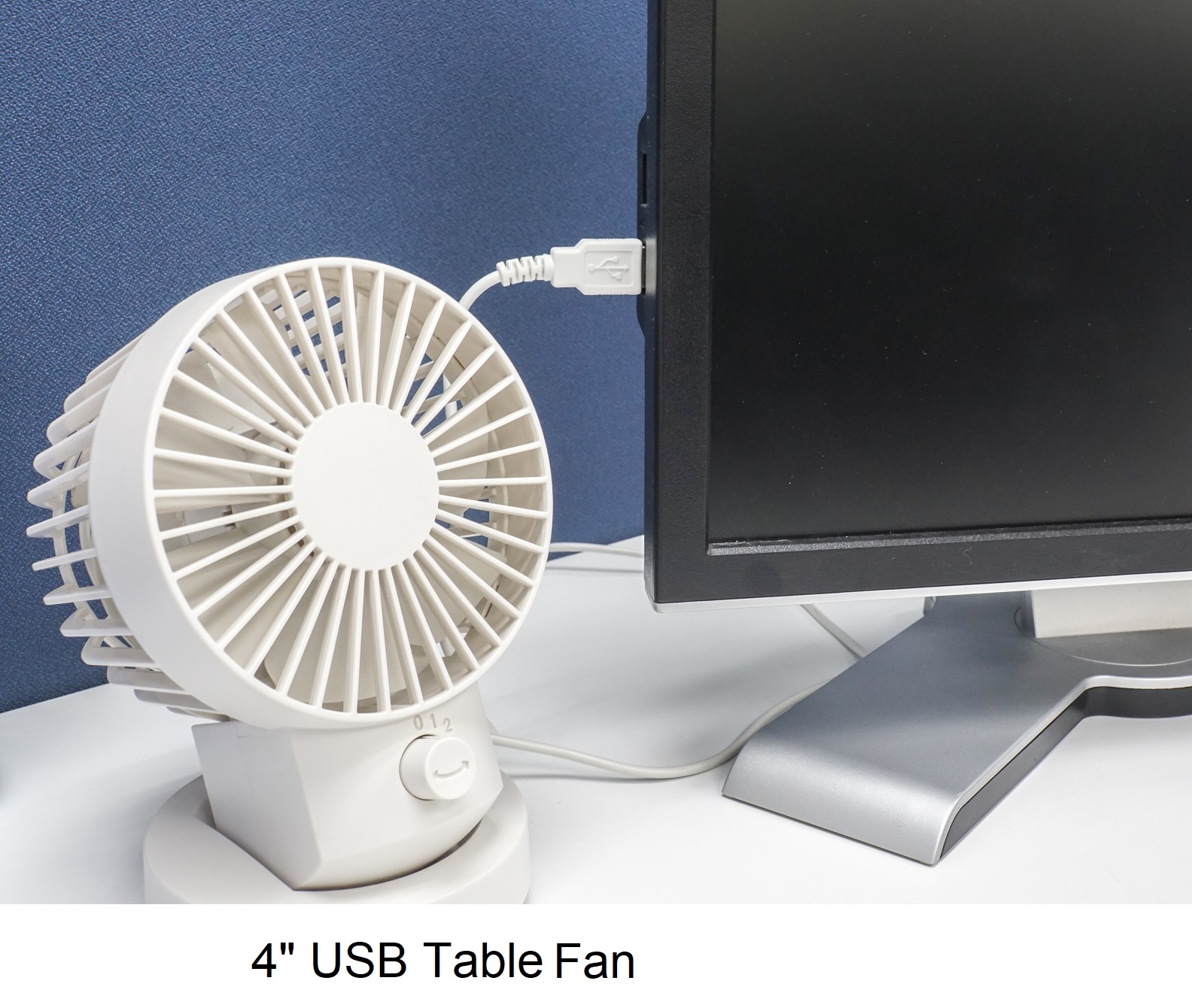
As mentioned above, there are also table top tower fans. These are normally about 12″ tall and produce about 400
CFM. They are quiet and powerful and take up less desk space than table fans that produce this much airflow.
You can estimate the maximum airflow of a table fan if it is not given, by comparing its weight and blade diameter to that of larger and smaller models which do give their airflow. The main other factor is the power source. As mentioned,
120-volt models have the greatest airflow. The weight is often given on websites and the heaviest fans tend to have the highest airflows.
Clip On Fans
“Clip on fans” are very small fans that clamp onto the edge of a desk or table, so they don’t take any space. They are quieter than most table fans because most table fans make a little noise vibrating against the table. Many are battery
powered and easy to move around the house.
Their airflows aren’t given, but the 120-volt models have the highest airflow and the battery powered models have the lowest. Some are powered by 12-volt transformers and some are USB-powered, to plug into your computer or a USB transformer.
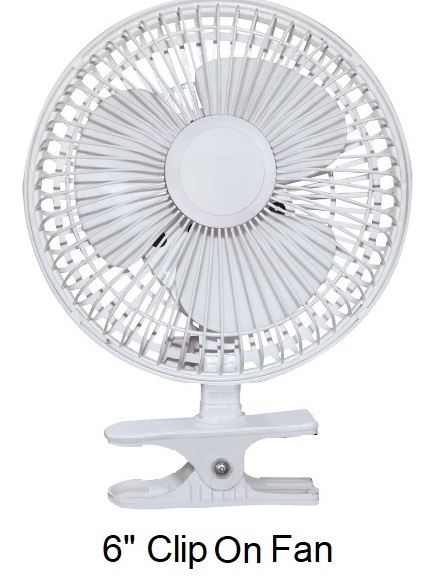
Energy Tips for Window Fans and Portable Fans
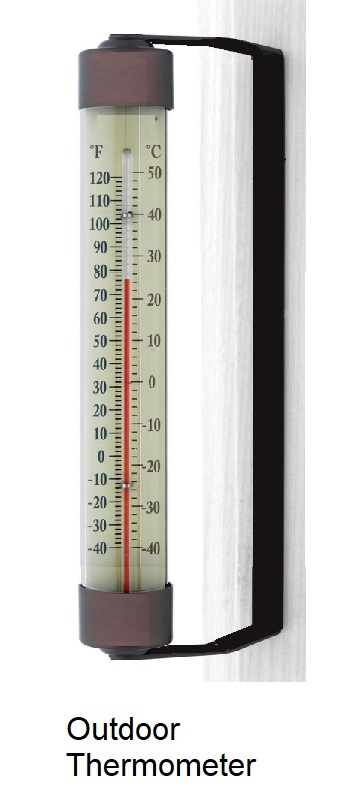
In the morning the house will be cooler as a result, and use less air conditioning. Heat energy will flow out of the walls, floors and ceilings.

In the Bedrooms
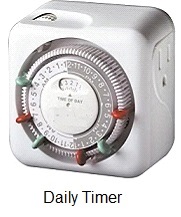


In the Home Office
In the Kitchen
In the Workshop

Whole House Fans
Whole house fans move air from the entire house up to the attic, where it leaves the house through the attic vents (gable vents, ridge vents, soffit vents). They are normally in the attic floor, but “ducted whole house fans” have a vent
in the attic floor, and the fan draws the air through the vent and a short, wide duct (see below).
These fans cool the home well when it is cooler outside than inside and windows are opened throughout the house.
Large whole house fans can purge a house of hot air in two to three minutes. Some whole house fans have shutters that close automatically when the fan is not operating. Unless your home is unusually air-tight, a whole house fan will
cool your home even with the windows closed.

Two types of whole house fans are mounted to the attic floor: belt drive fans and direct drive fans. Belt drive fans are quieter but more costly, although the more expensive direct drive fans are also quiet. Ducted whole house fans are
mounted to the attic ceiling rafters above the opening in the ceiling, and draw the air up to them through a duct.
They are quieter and allow you to avoid cutting a very large hole in your attic floor. Their problem is that they are much smaller and create much less air flow.

Before installing a whole house fan, check that your attic has as much attic vent area as required by the fan’s manufacturer. If not, the fan will draw less air out of the house. Also, the air pressure in the attic will become too high, forcing hot attic air down into the living area and causing a push on the roof structure, which could be harmful.
You can install a fan that requires more attic vent area than you have by cutting additional soffit or gable vents or by installing a “roof turbine vent”. These rely on wind to be fully effective but they vent air when there is no wind.
They are used mainly in warm climates, where the homes use more cooling that heating.
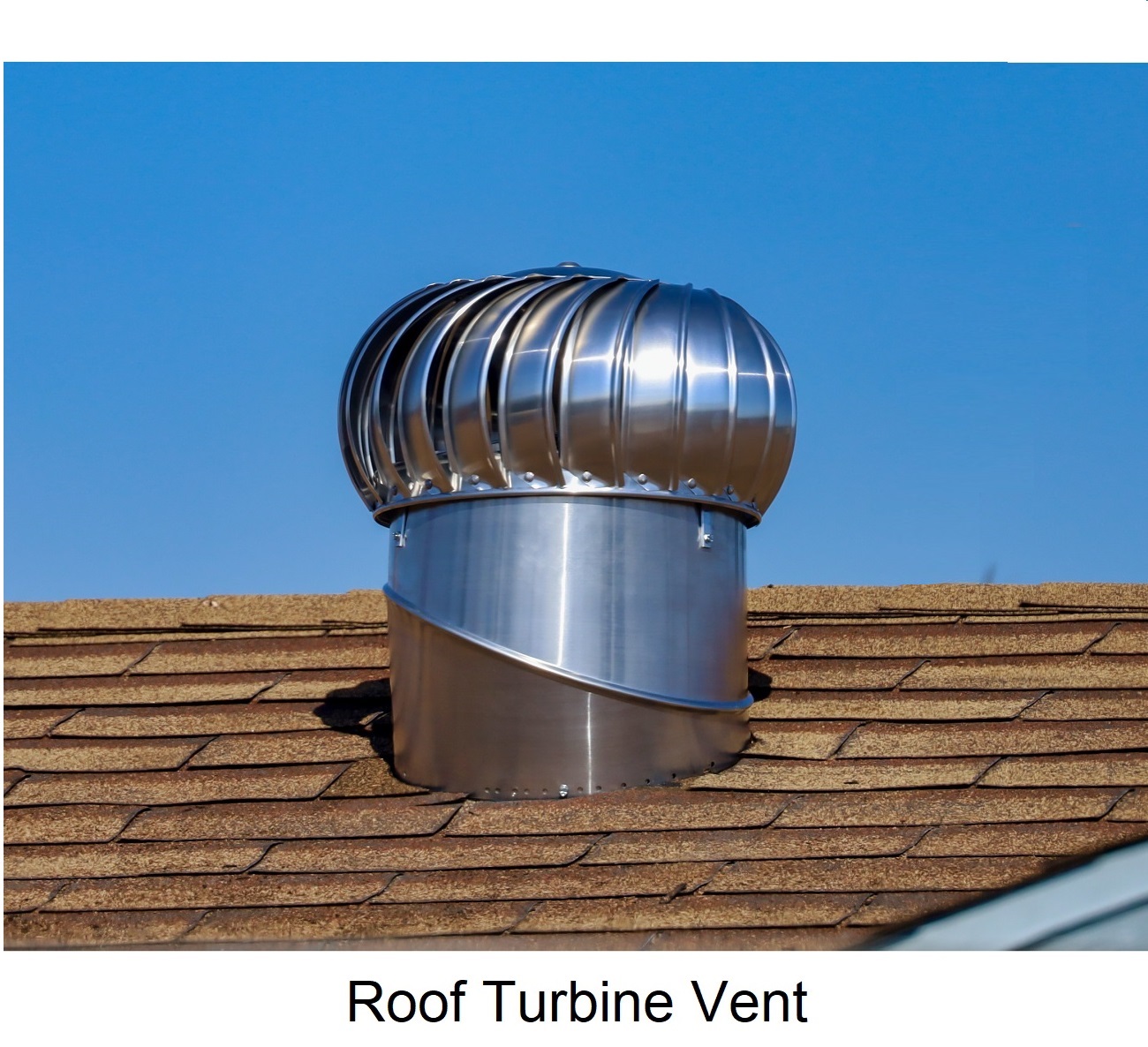
Pros and Cons of Installing a Whole House Fan
They can raise the humidity in the home on rainy days. When the pollen count is high, pollen will enter.
Belt drive and direct drive fans, which are both mounted directly to the attic floor, are slightly noisy due to air moving through them. This bothers some people when sleeping with their bedroom doors open.
Energy Tips for Using Whole House Fans
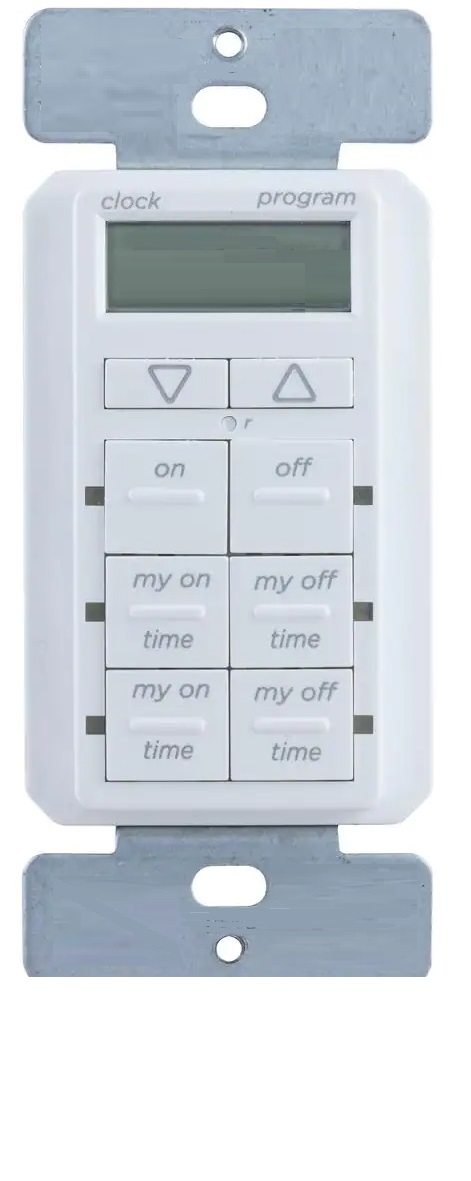
Ceiling Fans
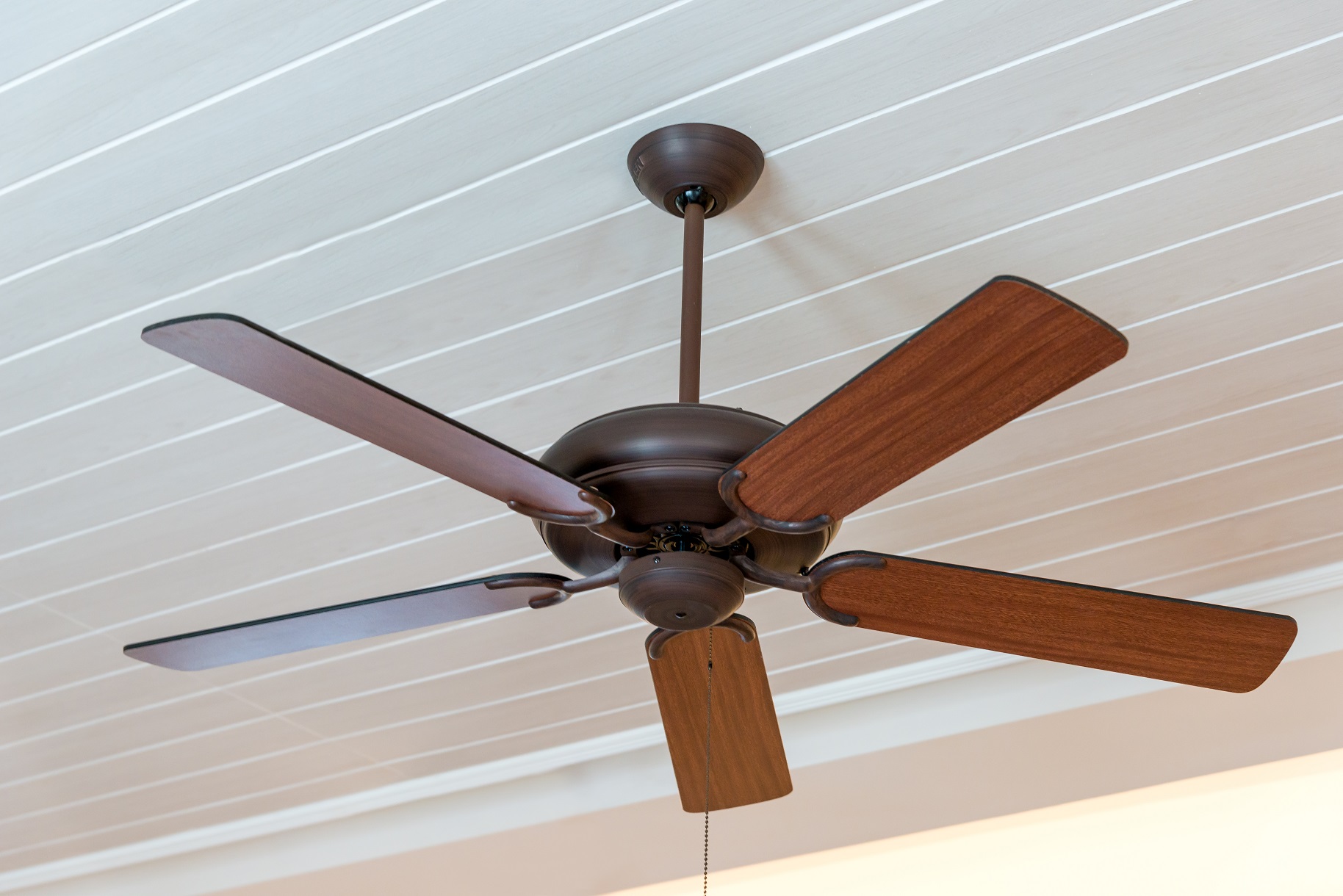
Ceiling fans can create strong breeze, which allows you to turn down or turn off your air conditioning . It has been estimated that a correctly-sized ceiling fan can allow you to raise the air conditioning thermostat setting by as much
as 4°F with no reduction in comfort. Sleeping with a ceiling fan running allows you to use less air conditioning because the breeze removes a layer of warm air from the blanket.
A ceiling fan uses only about as much electricity as a large incandescent light bulb. The large models use about 85 watts and the smallest models use about 50 watts. Also, the right fan will beautify almost any room, increasing the property
value of your home.
Energy Tips for Buying Ceiling Fans
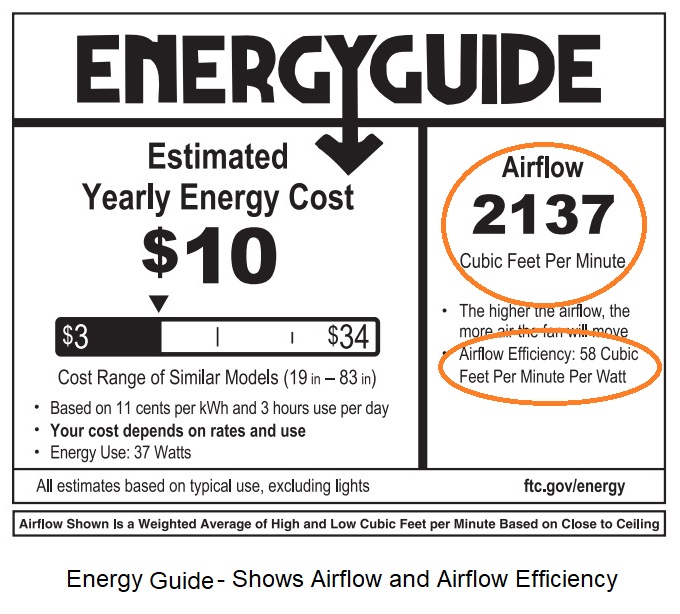
Energy Tips for Using Ceiling Fans
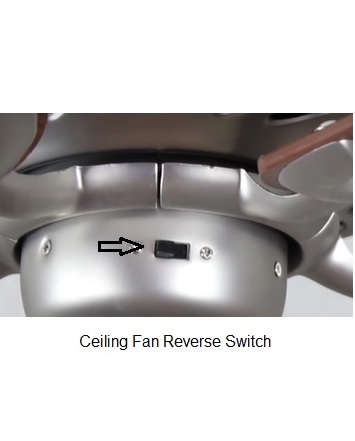
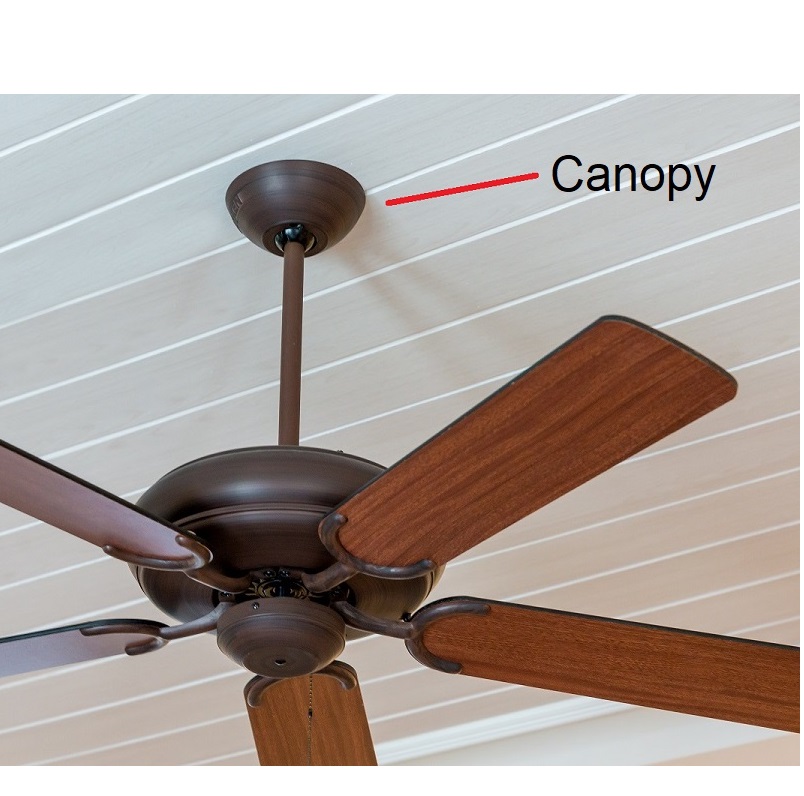
How to Repair Loose or Wobbly Ceiling Fans
If you have a ceiling fan that you don’t use because it wobbles, repair it. Fans most often wobble because their blades aren’t screwed on tightly or because the blades are badly out of balance.
There are normally three large screws attaching each blade to a bracket and two large screws attaching the bracket to the body of the fan. Tighten all of these with a #3 Philips screwdriver. This is larger than the most common sized
Philips screwdriver.
After tightening the screws, balance the blades. To do this, measure the distance from the tip of each blade to the ceiling. If one or two blades is higher are higher than the others, tape a weight, such as a large steel nut onto them to make them level with the others.
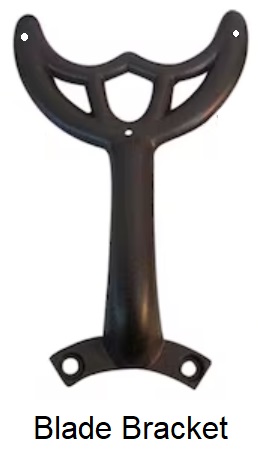
If one or two blades are lower than the others and they are connected to braces with three screws, loosen the screws and slip in a piece of cardboard to slightly raise its angle.
If you have a ceiling fan you don’t use because it shakes or wobbles and its blades are tight and not out of balance, the fan may not be firmly mounted. It may be mounted to an electrical box that is not be firmly mounted. To check,
lower the canopy to see the mounting bracket and electrical box. Shake the fan and notice if the electrical box moves. Often, a small, rectangular electrical box designed for a ceiling light is being used, and this is unsafe.
This box could be replaced with a box designed for ceiling fans, but if the wiring is very old, replacing the box could easily damage the insulation, which is dangerous. To stabilize the fan, mount it directly to the ceiling, not
only to the box. It is better to hire an electrician to do this.
A ceiling fan electrical box may be supported by a brace that is attached to the adjacent floor joists. The box will be attached to the brace by 2 screws, and if they come loose the fan may shake or wobble. If an unfinished attic is
above the fan, it is easy to see and tighten those screws.
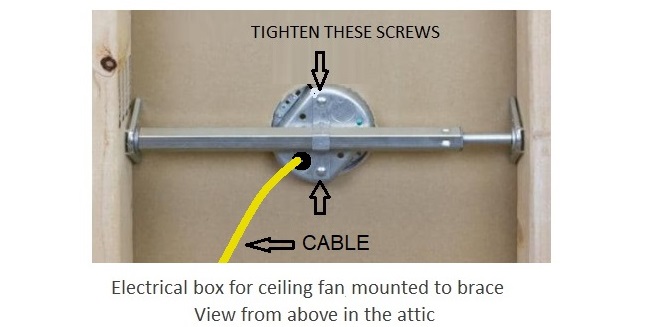
Energy Tips and Safety Tips for Mounting Ceiling Fans

Fan Electrical Safety
Using Extension Cords
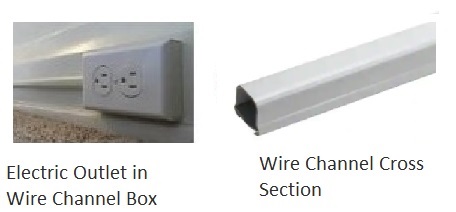
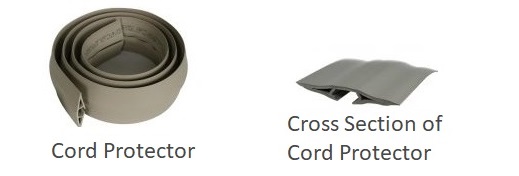
If you cool and circulate the air with fans by buying enough of the right ones, you can use much less air conditioning and save money. The most comfortable temperature for your home will be a little higher.

No Responses